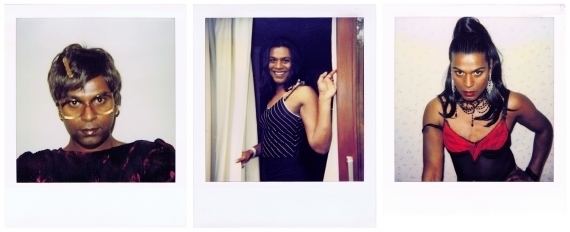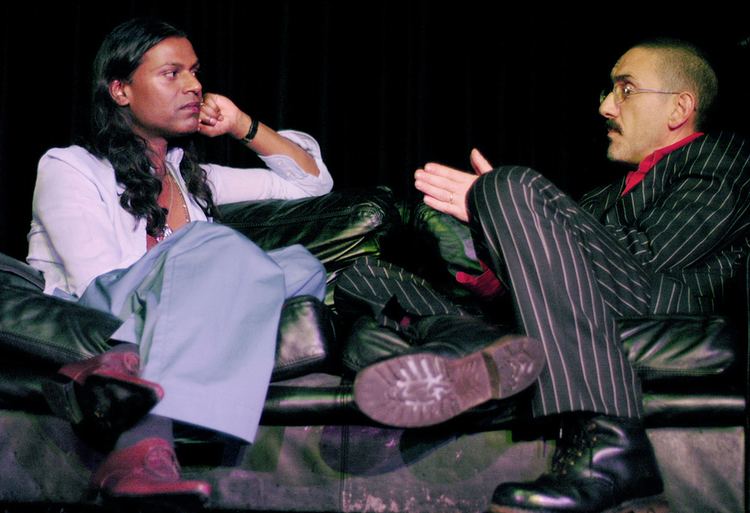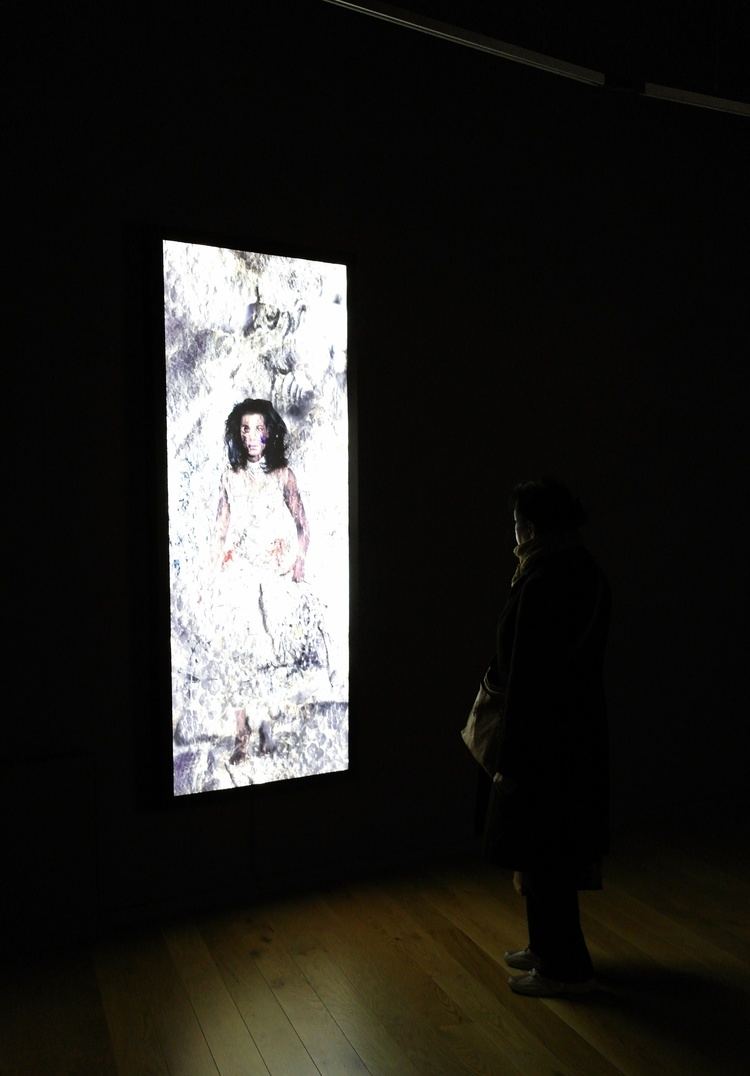Occupation Artist Years active 1998 to present | Name George Chakravarthi | |
Nationality British (formerly Indian) Website www.georgechakravarthi.com | ||
George chakravarthi thirteen
George Chakravarthi is a multi-disciplinary artist working with photography, video, painting and performance. His work addresses the politics of identity including race, sexuality and gender, and also religious iconography among other subjects. He was born in India and moved to London, England in 1980.
Contents
- George chakravarthi thirteen
- George chakravarthi interview royal shakespeare company
- Early life
- Publications
- Themes
- Personal life
- References

He has exhibited and performed all over the UK and internationally at venues including Site Gallery, Sheffield, England; Tate Modern, London, England; Victoria and Albert Museum, London, England; Künstlerhaus Mousonturm, Frankfurt, Germany; Dance Academy (Tilburg), Tilburg, Netherlands; Queens Gallery, British Council, New Delhi, India; La Casa Encendida, Madrid, Spain; Brut Künstlerhaus, Vienna, Austria and Abrons Arts Center, New York City, USA.

Chakravarthi has been commissioned by the BBC, Artangel, InIVA, the Arts Council of England, the British Council, the SPILL Festival of Performance, the Live Art Development Agency, the Shakespeare Birthplace Trust and the Royal Shakespeare Company.

Chakravarthi studied at the University of Brighton, the Royal Academy of Arts and the Royal College of Art.

George chakravarthi interview royal shakespeare company
Early life
Chakravarthi was born in New Delhi, India on 26 November 1969 to parents with origins in Tamil Nadu, India and British Burma. His parents considered the education of their children a priority, so the family lived very modestly in order for him and his siblings to be privately educated while in India. Chakravarthi attended St. Columba's School, Delhi, an English-medium school run by a Roman Catholic brotherhood (Congregation of Christian Brothers). Although nominally brought up as a Catholic, Chakravarthi's family encouraged him to absorb and be influenced by Hinduism and Buddhism.
In 1980, Chakravarthi moved with his family to the UK. This was around the time of the Brixton and other riots, and the peaks for organised racism and electoral success of the far-right (National Front General election results in May 1979). Mary Brennan, reviewing the National Review of Live Art in 2001, described the effect on Chakravarthi of his move to the UK as follows:
He continued his education at St. Patrick's Primary School and St. Paul's Secondary School in south London, both Roman Catholic, multi-cultural schools. He began documenting his reactions to his new environment and his changing identity through writing and drawing, and then making photographic self-portraits (initially using photo booths until he was given a camera by the sculptor and photographer Hamish Horsley).
Chakravarthi left home at the age of 16 and eventually settled in a modest flat in Greenwich, London. He had a variety of jobs including stacking shelves in supermarkets, as a go-go dancer in various nightclubs and as a photographic and artist's model. He attended a short course in photography at the Thames Independent Photography Project (TIPP) where his interest in photography and particularly making self-portraits was encouraged.
Chakravarthi was an undergraduate at the University of Brighton. He obtained a first-class Bachelor of Arts in Visual and Performance Art. For the degree show he submitted ′Resurrection′ (a photograph 12 feet by 5 feet) and a live performance, the subject of both was The Last Supper, with Chakravarthi in the place of Jesus and women dressed in saris in the positions of the disciples, as depicted by Leonardo da Vinci. He received an award from Nagoya University for outstanding artistic achievement.
He started his postgraduate studies at the Royal Academy of Arts and, after taking a year out, he completed his Master of Arts at the Royal College of Art in 2003. For the final show at the Royal College of Art, he submitted ′Olympia′, a video installation based on the painting by Édouard Manet, with Chakravarthi in the position of the nude woman and a white man in the place of the black servant woman; it won him the Chris Garnham Award for 'Best Use of Photography'.
In 2003 Chakravarthi was involved in the Live Art Development Agency's "Live Culture" event at Tate Modern, contributing to Guillermo Gómez-Peña's collaboration
Publications
Themes
A number of common themes are apparent in Chakravarthi’s work including:
Personal life
Chakravarthi is married and lives in London and Ely. He and his partner have been together since January 1994, they were legally married at Chelsea Old Town Hall, King's Road, London in May 2006 (their civil partnership having later been converted into marriage).
